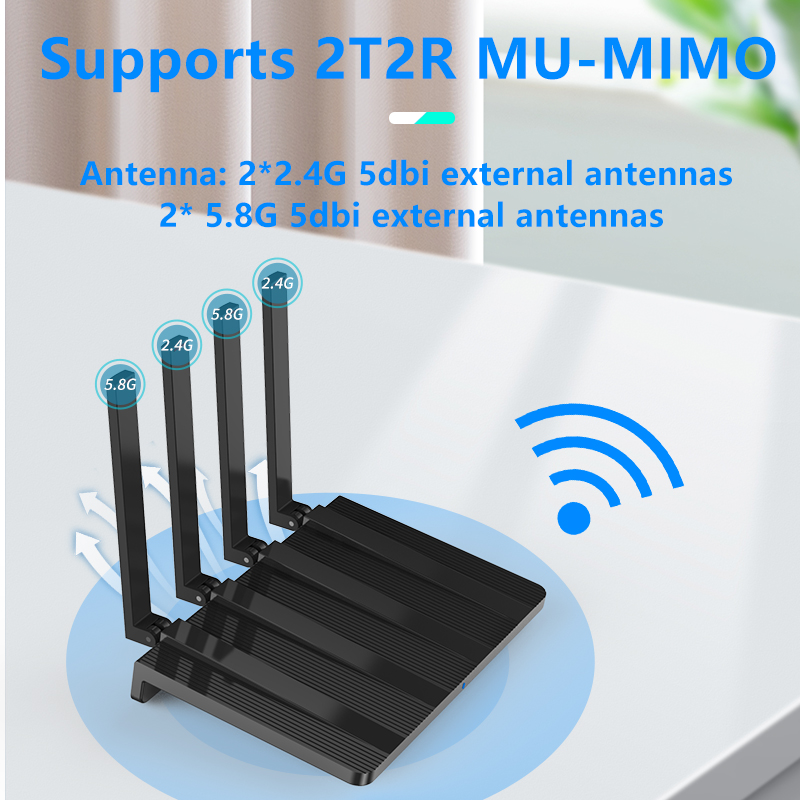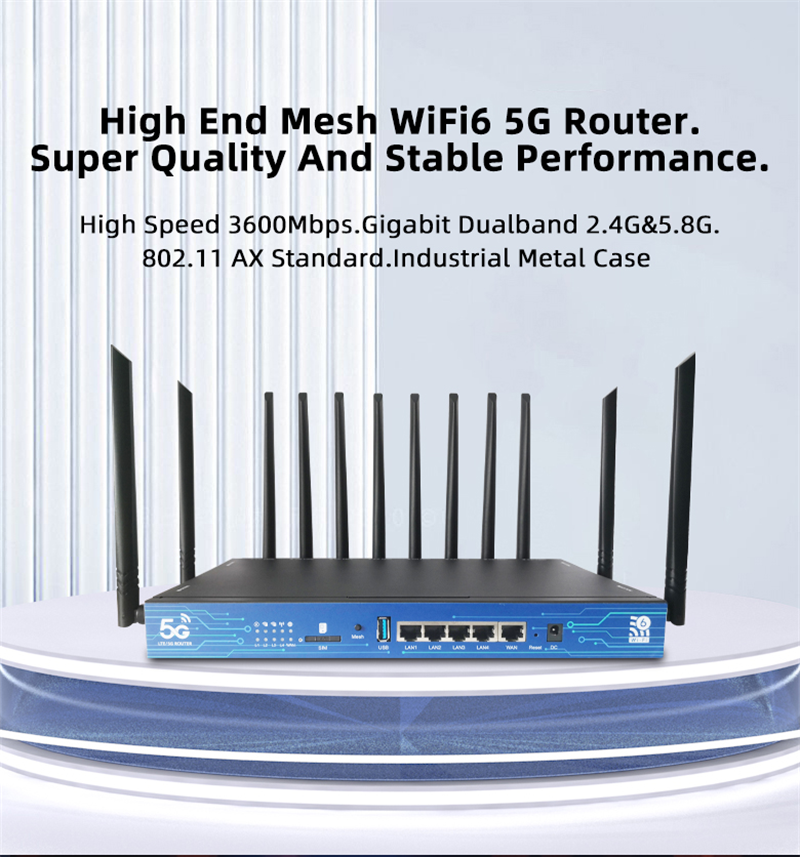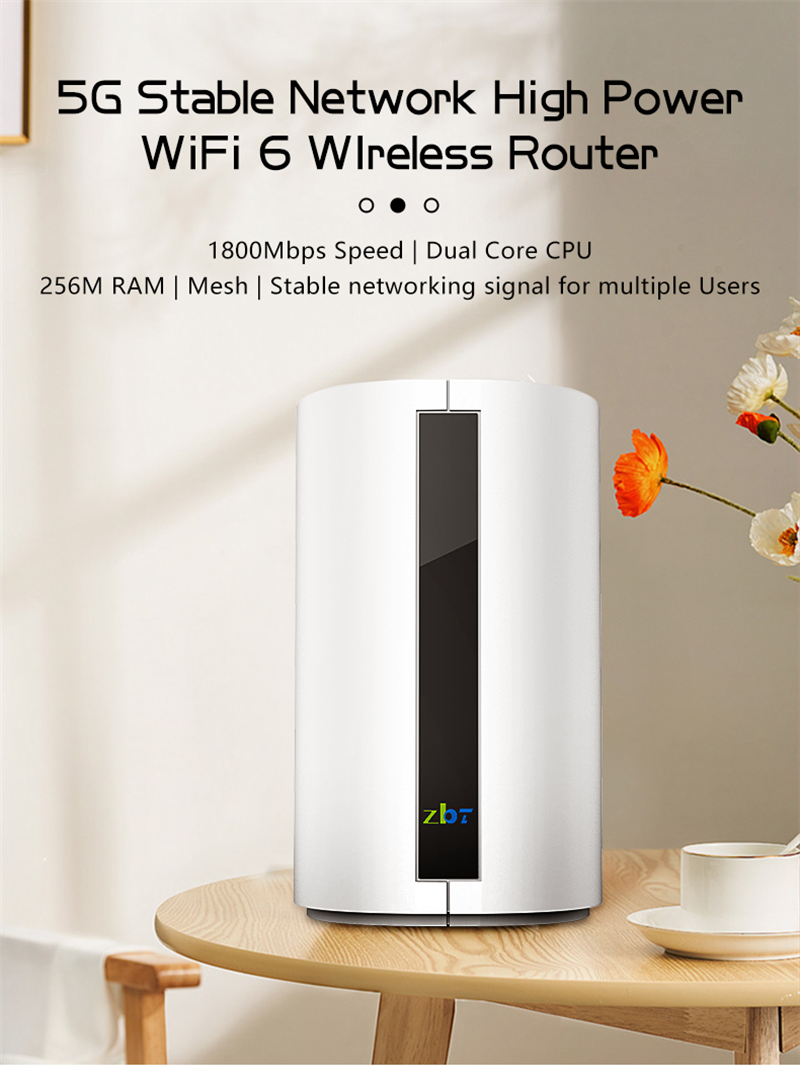What is the Wi-Fi 6?
Since 2019, WFA (Wi-Fi Alliance) has changed to a new standard to simplify the name, so Wi-Fi 6 appears, and the old name is 802.11ax. Does WiFi 6 seem easier to understand and easy to remember?The Wi-Fi 6 is the WFA’s latest wireless regional network standard.When Wi-Fi 6 is used in heavy frequency width usage situations, it can improve speed, increase efficiency and reduce congestion.Previous to the 802.11b,802.11a,802.11g Waple 802.11 acaidzhen
|
The year of release |
Wi-Fi |
Wireless network standard |
frequency range |
Maximum transmission rate |
|
In 1997 |
first generation |
IEEE 802.11 (Wi-Fi 1) |
2.4GHz |
2 Mbit/s |
|
In 1999 |
second generation |
IEEE 802.11a |
5GHz |
54 Mbit/s |
|
In 2003 |
third generation |
IEEE 802.11g (Wi-Fi 3) |
2.4GHz |
54 Mbit/s |
|
In 2009 |
The fourth generation |
IEEE 802.11n ( Wi-Fi 4 ) |
2.4GHz or 5GHz |
600 Mbit/s |
|
In 2013 |
The fifth generation |
IEEE 802.11ac ( Wi-Fi 5 ) |
5GHz |
6,933 Mbit/s |
|
In 2019 |
The sixth generation |
IEEE 802.11ax ( Wi-Fi 6 ) |
2.4GHz or 5GHz |
9,607.8 Mbit/s |
First, low latency
With a revolutionary combination of OFDMA, MU-MIMO and BSS Coloring, WiFi 6 provides up to four times higher network capacity to reduce latency in traffic-dense environments.At the same time, WiFi5 will need more power than WiFi6 to handle multiple work demand, and cause more delays due to different device reaction speeds.With the revolutionary combination of OFDMA, MU-MIMO and BSS Coloring, WiFi 6 technology provides up to four times higher network capacity to reduce Delency in flow dense environment.
Second, faster transmission
The Wi-Fi 6 has an innovative 1024-QAM tuning technology that breaks through existing speed limits.It can accommodate 25% more information, with 1.25 times more efficiency and a higher speed of up to 9.6 Gbps.
Three, can handle the needs of many people, multiple work
There are less than 30 Wi-Fi 5 supports, and the Wi-Fi 6 supports up to 200.
Four, low power consumption, more power saving
When the Wi-Fi function is dormant without signal transmission, only a small amount of data transmission is needed to keep the software and smart device connected, increase the battery life of Wi-Fi devices (such as Internet of Things IoT devices), and save about 50% power (data machine itself + device itself).The target wake-up time (TWT) feature allows the device to sleep without having to communicate with the router, reducing power consumption by up to seven times and greatly improving battery life.So you can greatly extend the battery life of your phone or pen.
Five, message covers further scope
At present, most users’ phones, tablets, computers and data machines are Wi-Fi 5, and Wi-Fi 6 and Wi-Fi 5 use the same 2.4G and 5G protocol standards, with the same penetration, but better speed and support.OFDMA technology improves the short distance of 5G signals, with AP router or MESH router (equivalent extension) (required) extension signals, extended bandwidth coverage (horizontal + vertical), distinguishing each channel into a smaller sub-channel with a smaller width, making it maximum Up to the 80% signal range.The result can provide less Wi-Fi dead corners, to achieve everywhere Internet access environment.The Wi-Fi 6 is like a larger highway, and has multiple branches at the same time, allowing you to get to your destination faster and smoother.
Wi-Fi 6 is compared to Wi-Fi 5
Talk about so much!What is the difference between Wi-Fi 6 and Wi-Fi 5?Still be confused?Don’t worry!To turn the above text into a list detailed detail than one, should be more clear:
| old name | 802.11n | 802.11ac | 802.11ax |
| Wi-Fi nome novum | Wi-Fi 4 | Wi-Fi 5 | Wi-Fi 6 |
| release time | 2009 | 2013 | 2019 |
| frequency range | 2.4 GHz | 5 GHz | 2.4 GHz & 5GHz can support 1 to 7 G H z in the future |
| The highest change | 64-QAM | 256-QAM | 1024-QAM |
| The highest theoretical rate | 54~600 Mbps (up to 4 streams) | 433 Mbps (80 MHz, 1 stream) 6933 Mbps (160 MHz, 8) | 600.4 Mbps (80 MHz, 1crossfire) 9607.8 Mbps (160 MHz, 8 crossfire) |
| Maximum frequency width | 40 MHz | 80 MHz~160 MHz | 160 MHz |
| MCS scope | 0~7 | 0~9 | 0~11 |
| Transfer classification multiple work | OFDM | OFDM | OFDMA |
Wifi6 Mesh WLAN Wireless Router:
https://www.4gltewifirouter.com/1800mbps-11ax-wifi-6-mesh-router/
Using the MT7621A/IPQ6000 scheme, MIPS dual-core CPU, the main frequency up to 880MHZ.
Independent WIFI6 chip, MT7905D and MT7975D, with rates up to 1800Mbps
With a high-speed 256MB DDR3, paired with 16MB Nor Flash
1WAN + 3LAN 1000M adaptive network port for automatic flip (Auto MDI / MDIX)…
Support “one-button brush mode”, that is, long press the reset button can enter the save brush mode…
USB3.0 interface support, which can be used to expand USB storage
External high gain WIFI antenna, wireless signal 360 degrees without dead Angle
3600Mbps 5g wifi6 router Z800AX:
Using the IPQ8072A chip scheme, MIPS dual-core CPU, the main frequency up to 2.2GHZ MHZ.
Independent WIFI chip was used
With high-speed 1GB DDR3, combined with 8MB Nor Flash and 16MB Nor Flash.
1WAN + 4LAN 1000M adaptive network port for automatic flip (Auto MDI / MDIX)…
IPQ8072 with watchdog function, which can reboot automatically in case of crash.
Built-in M.2 standard interface, can be used to connect 5G mobile communication module
1800Mbps 5g wifi6 router Z2101AX:
Using the MT7621A chip scheme, MIPS dual-core CPU, the main frequency up to 880 MHZ.
Independent WIFI6 chip was used,MT7905D and MT7975D, the rate is up to 1800Mb
With high-speed 256MB DDR3, paired with 16MB Nor Flash.
1WAN + 3LAN 1000M adaptive network port, support automatic flip (Auto MDI / MDIX).
Built-in M.2/Mini-PCIE standard interface (choose one of the two), which can be
used to connect to 5G/4G mobile communication module
For all ZBT wifi6 WLAN routers check this page:
https://www.4gltewifirouter.com/1800mbps-11ax-wifi-6-mesh-router/
For all ZBT wifi6 5G routers check this page:
https://www.4gltewifirouter.com/mesh-11ax-wi-fi-6-4g-5g-router/
Post time: Apr-09-2022




